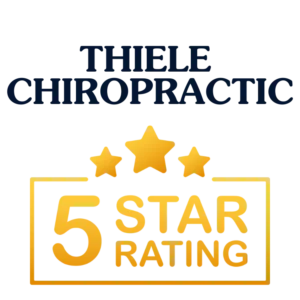Reduction of Chronic Primary Low Back Pain by Spinal Manipulative Therapy is Accompanied by Decreases in Segmental Mechanical Hyperalgesia and Pain Catastrophizing: A Randomized Placebo-controlled Dual-blind Mixed Experimental Trial
The Journal of Pain
February 16, 2024 [epub]
Carlos Gevers-Montoro, Blanca Romero-Santiago, Isabel Medina-García, Borja Larranaga-Arzamendi, Luis Álvarez-Gálovich, Arantxa Ortega-De Mues, Mathieu Piché; This study cites 121 references.
The objective of this study was to investigate the efficacy of spinal manipulative therapy (SMT) to improve chronic primary low back pain (CPLBP): 49 individuals with CPLBP and 49 controls (placebo group) were assessed.
The placebo group received a validated placebo intervention over 4 weeks at a rate of 3 times per week; the patient in a side posture, a force was then applied to the gluteal region, bilaterally, without cavitation.
The SMT group received 3 chiropractic visits per week for 4 weeks (12 total visits). This protocol was based on current literature on SMT for CPLBP. “In each SMT session, the patient received a high-velocity low-amplitude spinal manipulation targeting the most painful vertebral segment, bilaterally.” These manipulations were performed side-posture, with a force sufficient to generate joint cavitation (associated with an audible release). If the manipulation did not cause joint cavitation, the procedure was repeated once.
The primary outcomes were CPLBP intensity (0–100 on a numerical rating scale) and disability (Oswestry Disability Index). Patients were contacted at 8 and 16 weeks (4 and 12 weeks after the end of the protocol) to examine if the clinical improvement persisted.
Nociceptive pain = pain caused by painful stimuli in tissues, detected by nociceptors
Neuropathic pain = pain caused by injury to the nerve itself
Nociplastic pain = pain that is neither nociceptive nor neuropathic
Pain catastrophizing = the tendency to describe pain in exaggerated terms, to ruminate on it, and/or to feel more helpless about the experience
KEY POINTS FROM THIS ARTICLE:
- “Spine pain is the leading cause of disability worldwide and is a personal, economic, and social burden.”
- “Chronic primary low back pain (CPLBP) refers to low back pain that persists over 3 months, that cannot be explained by another chronic condition, and that is associated with emotional distress and disability.”
- “Previous studies have shown that spinal manipulative therapy (SMT) is effective in relieving CPLBP.”
- “A recent study reported that low back and neck pain were the conditions for which health care spending was the largest, exceeding spending for cardiovascular diseases and cancer.”
- “It was also reported that for low back pain (LBP), ineffective low-value care is overused, and effective high-value care is underused.”
- “This may worsen LBP and increase health care spending.”
- In CPLBP, “altered nociceptive processing is presumed to contribute to so-called nociplastic pain more than pathology in specific musculoskeletal tissues.”
- “Most clinical practice guidelines recommend spinal manipulative therapy (SMT) for the management of CPLBP.” [Very Important]
- Adverse Events:
- “Adverse events were categorized into 4 main categories: muscle stiffness, increased pain, radiating discomfort, and others.”
- Both the SMT group and the placebo group experienced similar adverse events.
- “All events were transient and self-managed or improved after further care within the 12 sessions, including one very severe event.”
- “Patients with CPLBP from both groups showed widespread hyperalgesia, consistent with nociplastic pain.”
- Findings:
- “Mechanical hyperalgesia at the manipulated segment was reduced after SMT compared with the control intervention.”
- “This randomized controlled trial found that 12 sessions of SMT yield greater relief of CPLBP than a control intervention.”
- Mechanical pain sensitivity was greater in women than men.
- “At the 8-week follow-up, clinical pain intensity remained lower for SMT compared with placebo.”
- “At the 16-week follow-up, pain intensity remained significantly different between groups.”
- “Segmental PPTs [pain pressure threshold] increased significantly in the SMT group compared with the placebo group.”
- “Changes in pain catastrophizing were significantly greater in the SMT group compared with the Placebo group.”
- “These results indicate that pain catastrophizing was significantly decreased in the SMT group compared with the placebo group.”
- “The present study shows that SMT produces greater pain relief compared with a control intervention that was undistinguishable from SMT.” [Key Point]
- “[This effect] persisted up to 12 weeks after SMT, suggesting that SMT produces long-lasting pain relief, possibly through specific mechanisms.”
- “Regarding the clinical significance of this effect, pain reduction after 4 weeks of SMT was 30.9 points (65%) lower than baseline.” [Key Point]
- “The difference between SMT and placebo is superior to the 10-point change proposed for the clinical significance of a placebo-controlled intervention.”
- “The present results indicate that SMT produced a clinically significant reduction of CPLBP.”
- “[SMT produces] effects beyond those attributable to placebo.” [Important]
- “Altogether, these factors are consistent with the efficacy of SMT for CPLBP.”
- “The reduction in segmental mechanical hyperalgesia was significantly greater in the SMT group compared with the placebo group.”
- “This suggests that SMT produces segmental effects on mechanical pain sensitivity in a clinical setting.”
- “The reduction of segmental hyperalgesia may contribute to clinically significant pain relief in patients with CPLBP.”
- “A statistically and clinically significant reduction of pain intensity was observed with 12 sessions of SMT in the present study.”
- “Patients receiving SMT also showed greater reductions in pain catastrophizing compared with placebo, which was clinically significant.”
- “SMT could help extinguish conditioned responses between lumbar spine movement and LBP, possibly by influencing brain processes involved in salience detection and pain anticipation.”
- “The present study indicates that SMT produces greater reductions in clinical pain intensity, pain catastrophizing, and segmental mechanical hyperalgesia compared with a control intervention.” [Key Point]
- “These findings are consistent with the improvement of CPLBP by SMT through the regulation of neural processes related to nociplastic pain.” [Key Point]
COMMENTS FROM DAN MURPHY: we have posted these Article Reviews that support this
study:
Article Review 12-03: Chronic Spinal Pain: A Randomized Clinical Trial Comparing Medication, Acupuncture, and Spinal Manipulation
Article Review 34-04: Long-Term Follow-up of a Randomized Clinical Trial Assessing the Efficacy of Medication, Acupuncture, and Spinal Manipulation for Chronic Mechanical Spinal Pain Syndromes
Article Review 8-07: Spinal Manipulation in the Treatment of Low back Pain
Article Review 49-07: Low Back Pain of Mechanical Origin: Randomized Comparison of Chiropractic and Hospital Outpatient Treatment
Article Review 10-15: Short-Term Effect of Spinal Manipulation on Pain Perception, Spinal Mobility, and Full Height Recovery in Male Subjects with Degenerative Disk Disease
Article Review 40-17: Low Back Pain and Pain Resulting from Lumbar Spine Conditions: A Comparison of Treatment Results
Article Review 25-17: Association of Spinal Manipulative Therapy With Clinical Benefit and Harm for Acute Low Back Pain
Article Review 1-18: Manipulation in Back Pain
Article Review 11-23: Randomised Comparison of Chiropractic and Hospital Outpatient Management for Low Back Pain


